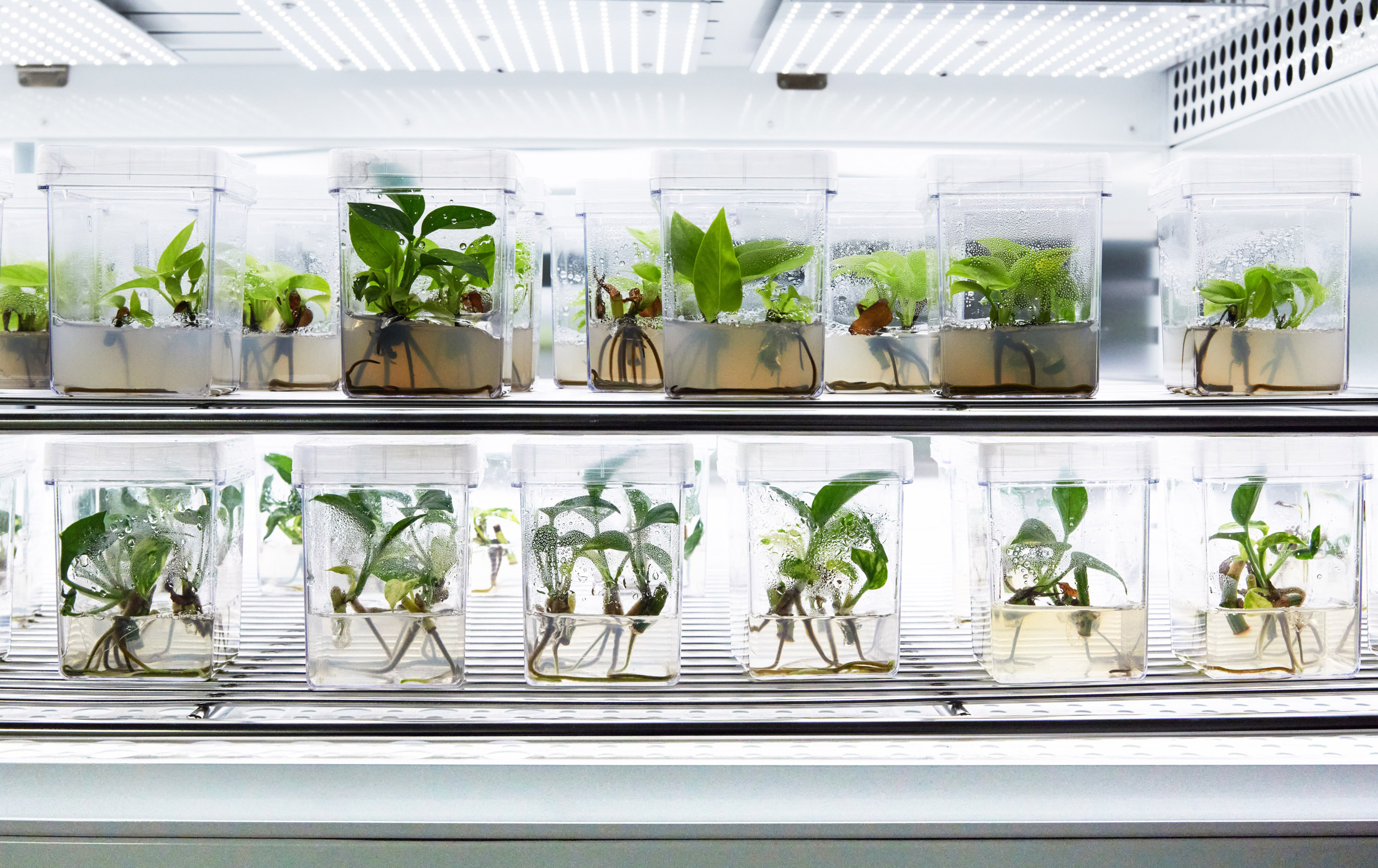The air-cleaning qualities of plants get a genetically modified boost
Indoor plants aren’t as good for air quality as you might think. Neoplants, a startup, aims to fix that.

In the late 1980s, NASA conducted a study to determine how well indoor plants like aloe vera, Chinese ivy, and potted chrysanthemums abate air pollution. The results were a boon to nursery owners everywhere: the research showed that houseplants can capably dispatch harmful pollutants including benzene and formaldehyde.
But NASA’s study was conducted in sealed chambers mimicking future long-term space habitats. A 2020 analysis in the Journal of Exposure Science & Environmental Epidemiology provided some sobering context: it would take 680 plants to clean the air in a 1,500-square-foot room—highly unrealistic for most plant parents. If the French biotech startup Neoplants has its way, though, you might need only one.
Neoplants’s marquee product, announced late last year, is the Neo P1, the first houseplant genetically engineered to remediate indoor air pollution. At first blush, this high-tech pothos—a tropical vine native to the Solomon Islands, also known as “Devil’s Ivy”—is indistinguishable from the real thing. It’s photogenic, fast-growing, and hard to kill. But unlike typical nursery stock, it also metabolizes indoor air pollutants missed by traditional air purifiers, which filter particulate matter: the volatile organic compounds (VOCs) produced by paint, gas stoves, and building materials.
“It’s actually a two-pronged approach,” explains Neoplants’s chief technology officer and cofounder, Patrick Torbey. The first prong is the genetic engineering of the plant’s metabolism. By introducing additional genes into the plant, Torbey’s Paris-based team coaxed the pothos to produce enzymes allowing it to use the VOCs it absorbs as carbon sources in its normal cellular metabolism. In a virtuous cycle, more air pollution only creates more plant matter and greater pollution-fighting capacity.
The second prong is bacterial. In a Neoplant, as in nature, microbes do the heavy lifting; two strains of symbiotic bacteria inserted into the Neo P1’s soil turn formaldehyde and the class of pollutants known as BTEX—benzene, toluene, ethylbenzene, and xylene—into harmless sugars and amino acids.
“I’ll be disappointed if there’s a plant on the moon and it’s not a Neoplant.”
“Bacteria are really important parts of most nutrient cycles,” explains Jenn Brophy, a Stanford researcher whose lab develops genetically engineered plants with greater resilience to climate change. “But microbiomes are very difficult to maintain. As soon as you ship a product to somebody, the viability of these bacteria declines.” This vulnerability seems to be Neoplants’s business model: the company will offer concentrated doses of proprietary microorganisms it calls “power drops” to maintain the plant’s air-cleaning efficiency. These will need to be applied monthly, much like replacing the filter in an air purifier. “Dyson, they sell their filters,” says cofounder and CEO Lionel Mora. “We sell microbiome.”
For now, the pothos itself is responsible for only about 30% of the Neo P1’s air-cleaning capacity—the microbiome handles the rest—but Mora and Thorbey expect that to change soon. It’s faster to improve on microbes than plants, they explain, so “the limits of what we can do with the plant are still far in front of us,” Mora says. “We are at the frontier of what is doable right now, but we see tremendous potential.”
The Neo P1 is the company’s first volley. “Air-filtering plants may get people to think about GMOs in a new way,” says Brophy. “Having something that you can touch and feel that is nonthreatening, but tangible, is a great way to get people introduced to the concept of genetically modified organisms.”
The timing is fortuitous. Pothos plants have become familiar companions in the indoor landscape of remote work just as the political debate about gas stoves has raised our awareness of once-unfamiliar domestic hazards. According to the EPA, Americans spend around 90% of their lives inside, where concentrations of some pollutants can be anywhere from two to five times higher than they are outdoors. “Usually we feel safe indoors,” says Mora. “But covid has shown us that even indoors, invisible things can be very harmful.”
It’s clear that Mora and Torbey are ultimately looking beyond indoor air cleaning and toward climate applications. “It’s easier to have an impact in the bedroom than to start with the atmosphere,” Torbey says. “But I’ll be disappointed if there’s a plant on the moon and it’s not a Neoplant.”
Claire L. Evans is a writer and musician exploring ecology, technology, and culture.
Deep Dive
Biotechnology and health
How scientists traced a mysterious covid case back to six toilets
When wastewater surveillance turns into a hunt for a single infected individual, the ethics get tricky.
An AI-driven “factory of drugs” claims to have hit a big milestone
Insilico is part of a wave of companies betting on AI as the "next amazing revolution" in biology
The quest to legitimize longevity medicine
Longevity clinics offer a mix of services that largely cater to the wealthy. Now there’s a push to establish their work as a credible medical field.
There is a new most expensive drug in the world. Price tag: $4.25 million
But will the latest gene therapy suffer the curse of the costliest drug?
Stay connected
Get the latest updates from
MIT Technology Review
Discover special offers, top stories, upcoming events, and more.